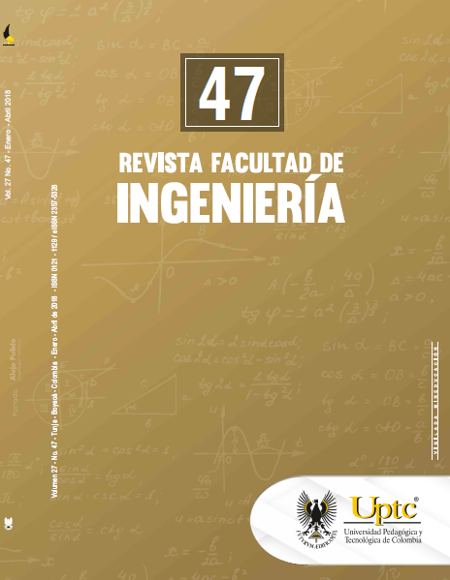Aplicación de Inteligencia de Negocios para el análisis de vulnerabilidades en pro de incrementar el nivel de seguridad en un CSIRT académico

Resumen
Esta investigación tuvo como objetivo diseñar una solución para la toma de decisiones mediante Inteligencia de Negocios, que permite adquirir datos e información de una amplia variedad de fuentes y utilizarlos en la toma de decisiones en el análisis de vulnerabilidades de un equipo de respuesta ante incidentes informáticos (CSIRT). Este estudio se ha desarrollado en un CSIRT Académico que agrupa varias universidades miembros del Ecuador. Para llevarlo a cabo se aplicó la metodología de Investigación-Acción con un enfoque cualitativo, dividido en tres fases: Primera, se realizó una evaluación comparativa de dos herramientas de análisis de intrusos: Passive Vulnerability Scanner y Snort, que son utilizadas por el CSIRT, para verificar sus bondades y verificar si son excluyentes o complementarias; enseguida se han guardado los logs en tiempo real de los incidentes registrados por dichas herramientas en una base de datos relacional MySQL. Segunda, se aplicó la metodología de Ralph Kimball para el desarrollo de varias rutinas que permitan aplicar el proceso “Extraer, Transformar y Cargar” de los logs no normalizados, que luego serían procesados por una interfaz gráfica. Tercera, se construyó una aplicación de software mediante la metodología Ágil Scrum, que realice un análisis inteligente con los logs obtenidos mediante la herramienta Pentaho BI, con el propósito de generar alertas tempranas como un factor estratégico. Los resultados muestran la funcionalidad de esta solución que ha generado alertas tempranas y que, en consecuencia, ha incrementado el nivel de seguridad de las universidades miembros del CSIRT académico.
Palabras clave
alertas tempranas, análisis de vulnerabilidades, ETL, inteligencia de negocios, procesamiento electrónico de datos, seguridad cibernética, toma de decisiones
Citas
- M. Letho, "Cyber Security Education and Research in the Finland's Universities and Universities of Applied Sciences," International Journal of Cyber Warfare and Terrorism (IJCWT), vol. 6(2), pp. 15-31, Apr. 2016. DOI: http://doi.org/10.4018/IJCWT.2016040102. DOI: https://doi.org/10.4018/IJCWT.2016040102
- P. Cichonski, T. Millar, T. Grance, and K. Scarfone, "Computer security incident handling guide," NIST Special Publication 800-61, 2012
- M. West-Brown, et al. “Handbook for computer security incident response teams (CSIRTS),” No. CMU/SEI-2003-HB-002. Carnegie-Mellon Univ Pittsburgh PA software engineering institute, 2003. DOI: https://doi.org/10.21236/ADA413778
- P. Coughlan, and D. Coghlan, "Action research for operations management," International journal of operations & production management, vol. 22(2), pp. 220-240, 2002. DOI: http://doi.org/10.1108/01443570210417515. DOI: https://doi.org/10.1108/01443570210417515
- R. Bouman, and J. V. Dongen. Pentaho solutions: Business Intelligence and Data warehousing with Pentaho and MySQL. Wiley Publishing, 2009.
- R. Kimball, M. Ross, J. Mundy, and W. Thornthwaite. The kimball group reader: Relentlessly practical tools for data warehousing and BI remastered collection. John Wiley & Sons, 2015. DOI: http://doi.org/10.1002/9781119228912. DOI: https://doi.org/10.1002/9781119228912
- P. Valladares, W. Fuertes, F. Tapia, T. Toulkeridis, and E. Pérez, "Dimensional data model for early alerts of malicious activities in a CSIRT," in International Symposium on Performance Evaluation of Computer and Telecommunication Systems (SPECTS), Seattle, 2017. DOI: http://doi.org/10.23919/SPECTS.2017.8046771. DOI: https://doi.org/10.23919/SPECTS.2017.8046771
- R. Gaddam, and M. Nandhini, "An analysis of various snort based techniques to detect and prevent intrusions in networks proposal with code refactoring snort tool in Kali Linux environment," in International Conference on Inventive Communication and Computational Technologies (ICICCT), Coimbatore, 2017. DOI: http://doi.org/10.1109/ICICCT.2017.7975177. DOI: https://doi.org/10.1109/ICICCT.2017.7975177
- S. Dongkyun, and K. Lee, "Comparing security vulnerability by operating system environment," International Journal of Services Technology and Management, vol. 23 (1-2), pp. 154-164, 2017. DOI: https://doi.org/10.1504/IJSTM.2017.081884
- H. Elshoush, and I. Osman, "An improved framework for intrusion alert correlation," Proceedings of the World Congress on Engineering, vol. 1, 2012.
- R. Kimball, and R. Margy, The data warehouse toolkit: The definitive guide to dimensional modelling. John Wiley & Sons, 2013.
- I. Sharafaldin, et al., "Towards a Reliable Intrusion Detection Benchmark Dataset," Software Networking, vol. 1 (1), pp. 177-200, 2017. DOI: http://doi.org/10.13052/jsn2445-9739.2017.009. DOI: https://doi.org/10.13052/jsn2445-9739.2017.009
- J.L Pereira, and M. Costa, "Decision Support in Big Data Contexts: A Business Intelligence Solution," New Advances in Information Systems and Technologies, vol. 444, pp. 983-992, 2016. DOI: http://doi.org/10.1007/978-3-319-31232-3_93. DOI: https://doi.org/10.1007/978-3-319-31232-3_93
- S. Few, “Information Dashboard Design. The Effective Visual Communication of Data,” NY: O'Reilly, 2006.
- M. S. Gounder, V. V. Iyer, and A. A. Mazyad, "A survey on business intelligence tools for university dashboard development," in 3rd MEC International Conference on Big Data and Smart City (ICBDSC), Muscat, 2016. DOI: http://doi.org/10.1109/ICBDSC.2016.7460347. DOI: https://doi.org/10.1109/ICBDSC.2016.7460347
- J. Pajares, et al., "Project Management Methodologies in the Fourth Technological Revolution," Advances in Management Engineering. Springer International Publishing, pp. 121-144, 2017. DOI: http://doi.org/10.1007/978-3-319-55889-9_7. DOI: https://doi.org/10.1007/978-3-319-55889-9_7
- R. O’Connor, V. Elger, and P. Clarke. "Continuous software engineering—A micro services architecture perspective," Journal of Software: Evolution and Process, vol. 29 (11), pp. e1866, Nov. 2017. DOI: http://doi.org/10.1002/smr.1866. DOI: https://doi.org/10.1002/smr.1866